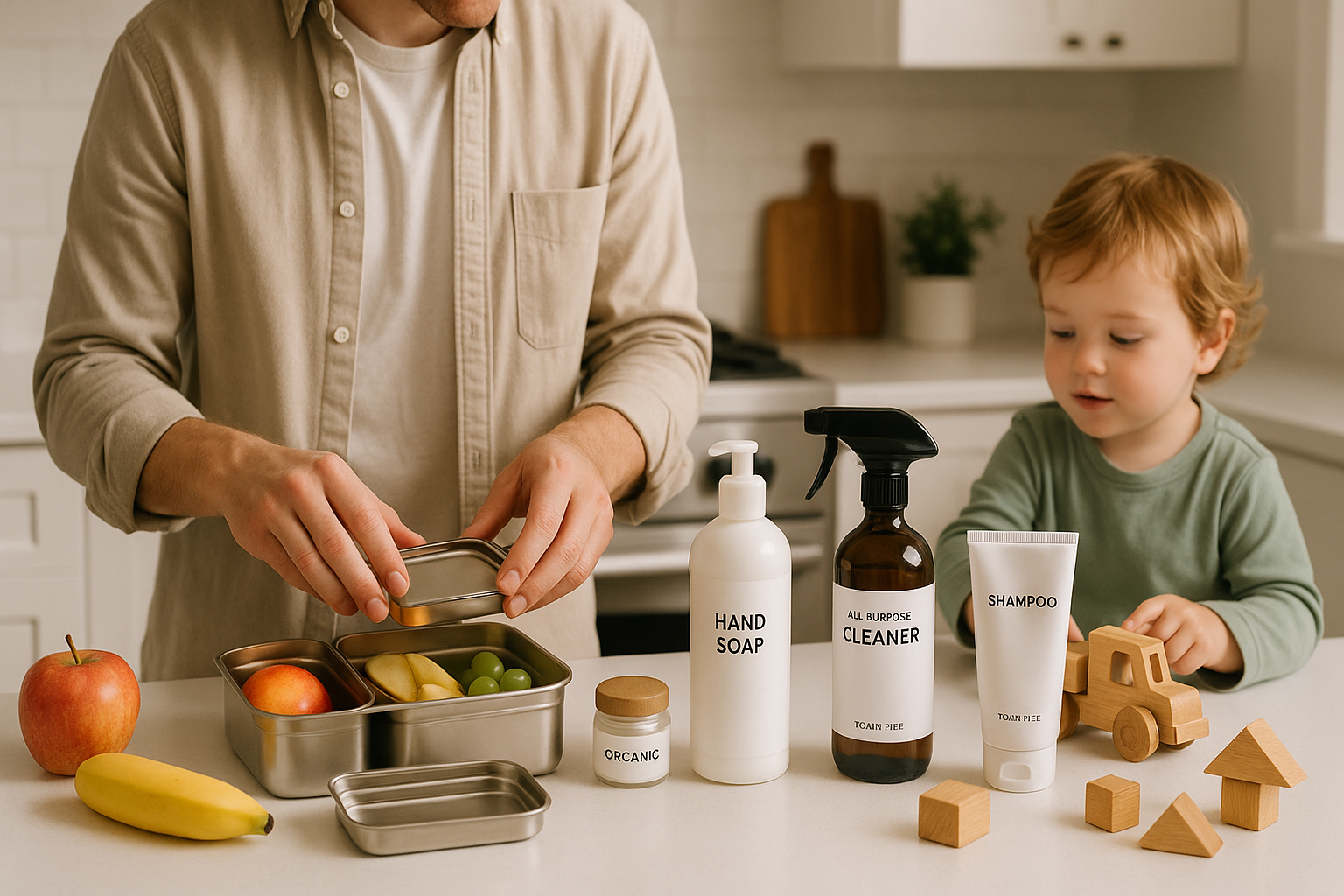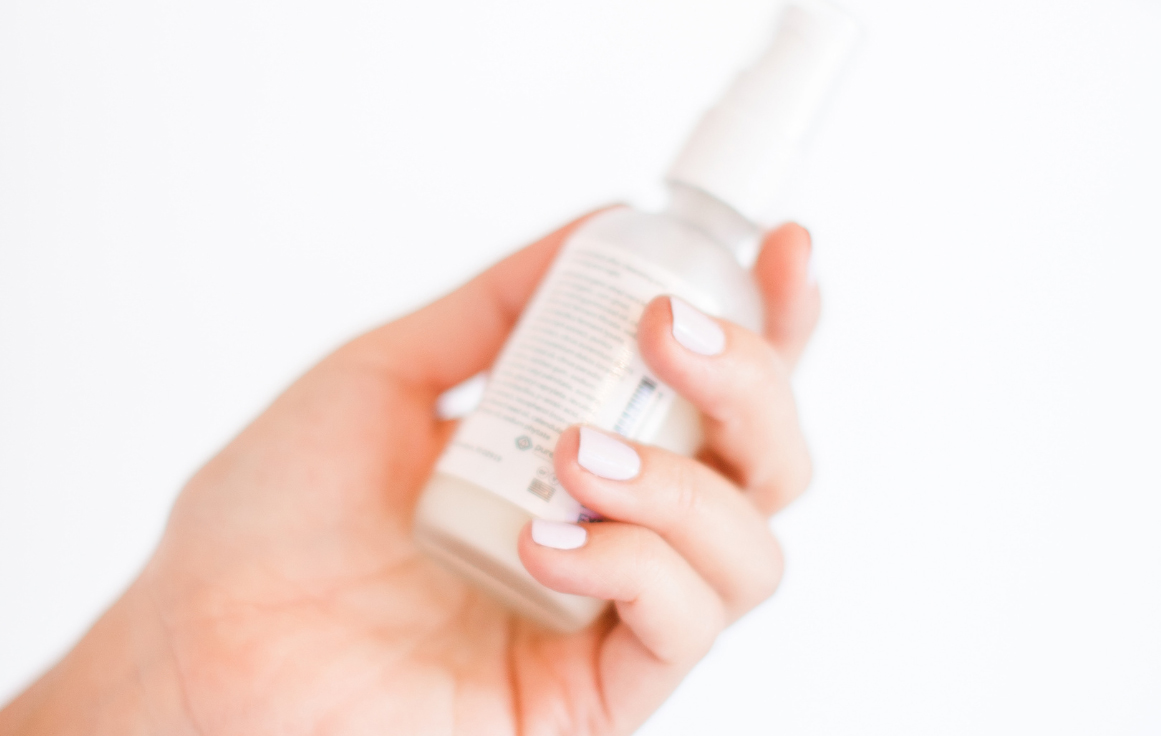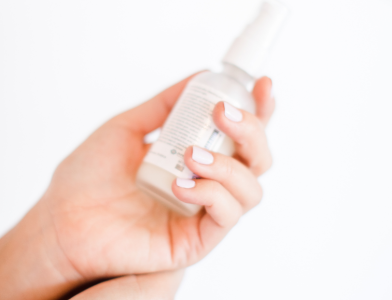If you’re a parent who feels like you’re doing everything right – buying organic, choosing clean brands, and reading every label – yet worrying that toxins are still sneaking into your child’s life, you are not alone. As both a toxicologist and a mom, I know how overwhelming it can feel to try and shield your family from every harmful ingredient. The truth is, some of the worst hormone disruptors are hiding in products that look completely safe and may not even be listed on the label. But here’s the empowering news: with a few easy, high-impact swaps, you can drastically reduce your children’s exposure to hidden toxins and protect their developing bodies and brains.
Why Toxin Exposure in Childhood Matters So Much
Your child eats, drinks, and breathes more than you do, pound for pound – so their exposure to environmental toxins is much higher. More importantly, kids aren’t just smaller adults. Their brains and hormonal systems are developing in real time, and their detox organs are still maturing. That makes them uniquely vulnerable to endocrine disrupting chemicals (EDCs), which can impact their growth, behavior, puberty, and even long-term fertility.
Top 5 Hidden Toxins to Watch For
- BPA & Phthalates (Plastics and Packaging)
BPA and phthalates are used in everything from plastic water bottles to food containers, canned goods, and even toys. Research links these chemicals to hormonal imbalances, early puberty in girls, and developmental changes in boys. They can disrupt estrogen and testosterone signaling, with long-term effects on reproductive health. - Synthetic Fragrance (Personal Care and Cleaning Products)
That harmless-sounding “fragrance” or “parfum” on labels often hides dozens or hundreds of chemicals, including hormone disruptors like phthalates and allergens. These are found in baby wipes, lotions, laundry detergent, and more – sometimes even in brands marketed as “gentle” or “natural.” - Flame Retardants (Pajamas, Furniture, Baby Gear)
Chemicals added to make items “flame resistant” – especially brominated and organophosphate flame retardants – can disrupt thyroid hormones, interfere with brain development, and lower children’s IQ. These are often found in pajamas, crib mattresses, car seats, and foam furniture. - Pesticide Residues (Conventional Produce and Snacks)
Many non-organic fruits, vegetables, grains, and snacks contain endocrine-disrupting pesticides that can impact nervous system and thyroid development. Kids are especially vulnerable because they eat and absorb more relative to their body weight. - PFAS “Forever Chemicals” (Uniforms, Food Packaging, Tap Water)
PFAS are incredibly persistent and are found in stain-resistant fabrics, waterproof outerwear, non-stick cookware, fast food packaging, and even water supplies. These compounds have been linked to obesity, immune dysfunction, and hormone disruption in children.
Simple Swaps to Cut Toxin Exposure Today
- Choose Safer Food and Drink Containers: Opt for stainless steel or glass water bottles and lunch containers. Cut back on canned foods, or seek BPA-free, third-party certified brands.
- Avoid Soft PVC Plastic Toys: Steer clear of toys labeled “PVC” or those with a strong synthetic smell.
- Pick Fragrance-Free Products: Go fragrance-free for anything your child touches or breathes, or choose only essential oil-based options from brands that list all ingredients.
- Shop for Flame Retardant-Free Pajamas and Furniture: Look for GOTS-certified organic PJ’s and “no added flame retardants” labels. Use a barrier mattress cover and vacuum with a HEPA filter to reduce toxic dust at home.
- Prioritize Organic Produce: Especially for the EWG’s Dirty Dozen foods. Always wash and, when possible, peel fruits and veggies to remove residue.
- Filter Your Water: Use a reverse osmosis or carbon block filter for drinking and cooking water.
- Avoid “Forever Chemical” Clothing & Food Packaging: Skip stain-resistant and water-repellent labeled items, and prepare more meals at home from whole ingredients.
Dr. Yvonne Approved Low Tox Kids Products
Empower Yourself Without Overwhelm
Small, intentional swaps add up and can have a huge impact. Instead of trying to make your home 100% toxin-free overnight, focus on changing the products that have direct contact with your child’s food, skin, and environment. Remember, each change is a step toward protecting your children’s hormones, behavior, and future health. You’re not alone on this journey, and every action you take today has lasting benefits for your family.
References
- Carroquino MJ, Posada M, Landrigan PJ. Environmental Toxicology: Children at Risk. Environmental Toxicology. 2012 Dec 4:239–91. doi: 10.1007/978-1-4614-5764-0_11. PMCID: PMC7121289.
- Özen S, Darcan Ş. Effects of environmental endocrine disruptors on pubertal development. J Clin Res Pediatr Endocrinol. 2011;3(1):1-6. doi: 10.4274/jcrpe.v3i1.01. Epub 2011 Feb 23. PMID: 21448326; PMCID: PMC3065309.
- Papadimitriou A, Papadimitriou DT. Endocrine-Disrupting Chemicals and Early Puberty in Girls. Children (Basel). 2021 Jun 10;8(6):492. doi: 10.3390/children8060492. PMID: 34200537; PMCID: PMC8226958.
- Di Pietro G, Forcucci F, Chiarelli F. Endocrine Disruptor Chemicals and Children’s Health. Int J Mol Sci. 2023 Jan 31;24(3):2671. doi: 10.3390/ijms24032671. PMID: 36768991; PMCID: PMC9916521.
- Özen S, Darcan Ş. Effects of environmental endocrine disruptors on pubertal development. J Clin Res Pediatr Endocrinol. 2011;3(1):1-6. doi: 10.4274/jcrpe.v3i1.01. Epub 2011 Feb 23. PMID: 21448326; PMCID: PMC3065309.
- Predieri B, Iughetti L, Bernasconi S, Street ME. Endocrine Disrupting Chemicals’ Effects in Children: What We Know and What We Need to Learn? Int J Mol Sci. 2022 Oct 7;23(19):11899. doi: 10.3390/ijms231911899. PMID: 36233201; PMCID: PMC9570268.
- Swan SH, Main KM, Liu F, Stewart SL, Kruse RL, Calafat AM, Mao CS, Redmon JB, Ternand CL, Sullivan S, Teague JL; Study for Future Families Research Team. Decrease in anogenital distance among male infants with prenatal phthalate exposure. Environ Health Perspect. 2005 Aug;113(8):1056-61. doi: 10.1289/ehp.8100. Erratum in: Environ Health Perspect. 2005 Sep;113(9):A583. PMID: 16079079; PMCID: PMC1280349.
- Rivera-Núñez Z, Kinkade CW, Zhang Y, Rockson A, Bandera EV, Llanos AAM, Barrett ES. Phenols, Parabens, Phthalates and Puberty: a Systematic Review of Synthetic Chemicals Commonly Found in Personal Care Products and Girls’ Pubertal Development. Curr Environ Health Rep. 2022 Dec;9(4):517-534. doi: 10.1007/s40572-022-00366-4. Epub 2022 Jul 22. PMID: 35867279; PMCID: PMC9742306.
- Uber M, Morgan MAP, Schneider MC, Gomes IRR, Imoto RR, Carvalho VO, Abagge KT. Frequency of perfume in 398 children’s cosmetics. J Pediatr (Rio J). 2024 May-Jun;100(3):263-266. doi: 10.1016/j.jped.2023.11.002. Epub 2023 Nov 24. PMID: 38012955; PMCID: PMC11065650.
- Antoniou EE, Otter R. Phthalate Exposure and Neurotoxicity in Children: A Systematic Review and Meta-analysis. Int J Public Health. 2024 Mar 25;69:1606802. doi: 10.3389/ijph.2024.1606802. PMID: 38590582; PMCID: PMC10999525.



